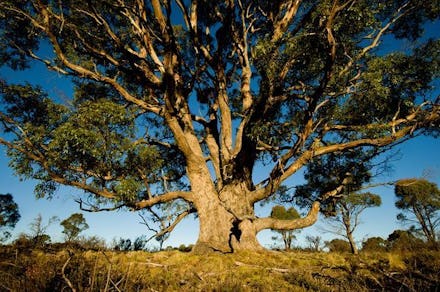These Trees Can Tell You Where to Strike Gold

We all wish money grew on trees, but now that wish became just a little bit true. Scientists in Australia have discovered that certain eucalyptus trees sport gold flakes on their leaves because the roots of the trees suck up gold deposits deep in the Australian ground. The story broke after a dispute between various scientists on whether the gold particles have been blown on the trees or had come from the ground, which was eventually proven.
How does this work? Basic elementary school science tells us plants take nutrients from the ground using roots. But gold is usually toxic to plants. The breakthrough is that this is the "first evidence of particulate gold within natural specimens of living biological tissue." Scientists are now looking to explain why..
These particular trees are found in the Goldfields-Esperance region of Western Australia, more commonly known as the Outback. The aridity of the region requires that the roots of the eucalyptus descend up to 130 ft. and through six levels of earth. In this case, the sixth level, consisting of green gray saprolite, is also a gold-rich zone.
Now, you're not going to see a gold tree in the distance. If you're lucky, you could extract the gold particles from hundreds of eucalyptus trees and maybe make one gold ring. National Geographic reports that there is "less than 0.000005% of each leaf by weight." It's probably not a good idea to just start picking the leaves off of trees to strike it big.
The real takeaway is that trees can now serve as markers for gold deposits. This potential gold rush can be a real help for Australia, which has struggled with high unemployment numbers and generally poor economic conditions.
Finally, some food for thought (literally): koalas actively chew on these leaves. Koalas actually sleep to conserve energy that's needed to chew the toxic, low-nutrition leaves. Some of them might be eating gold.